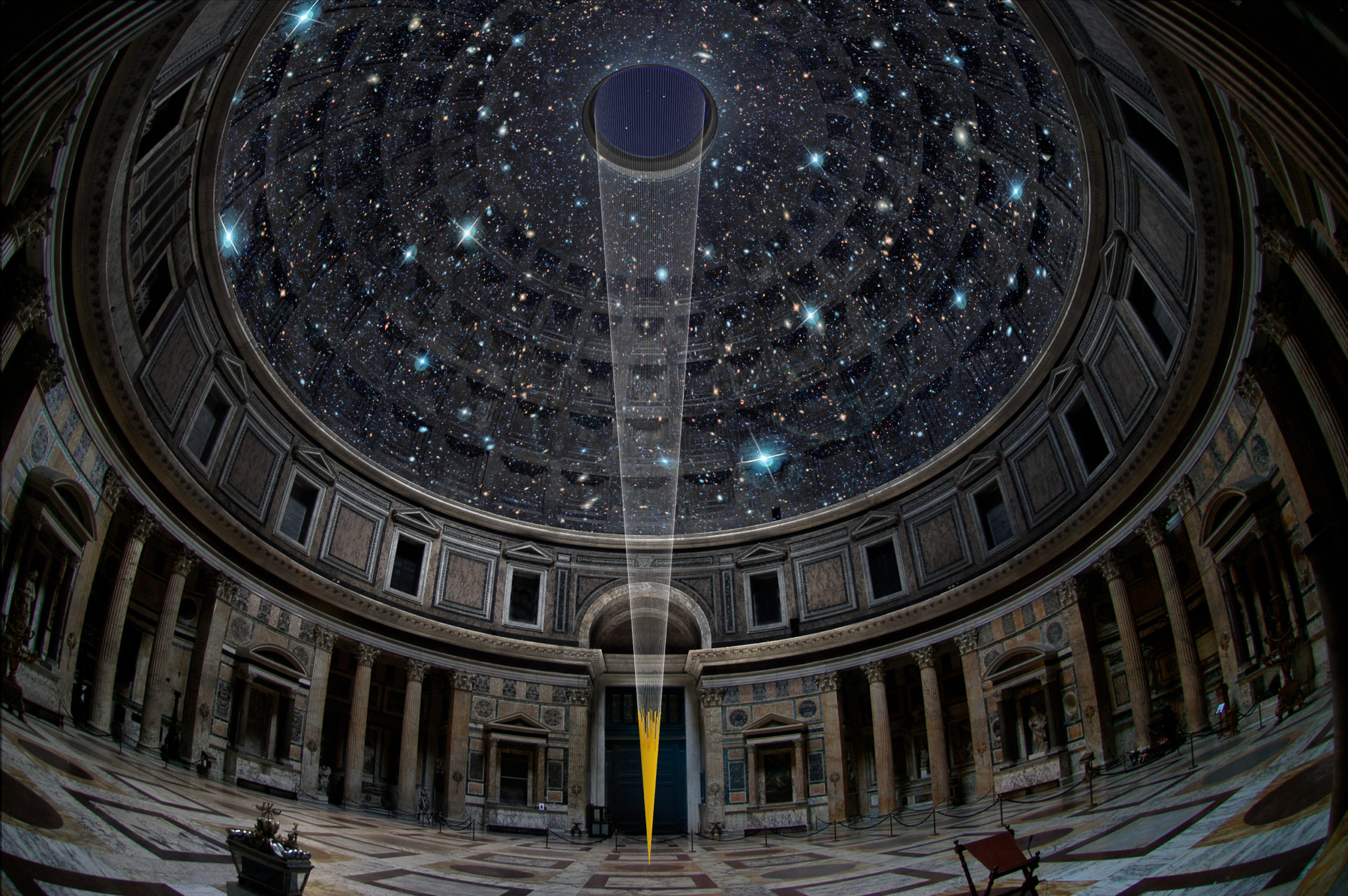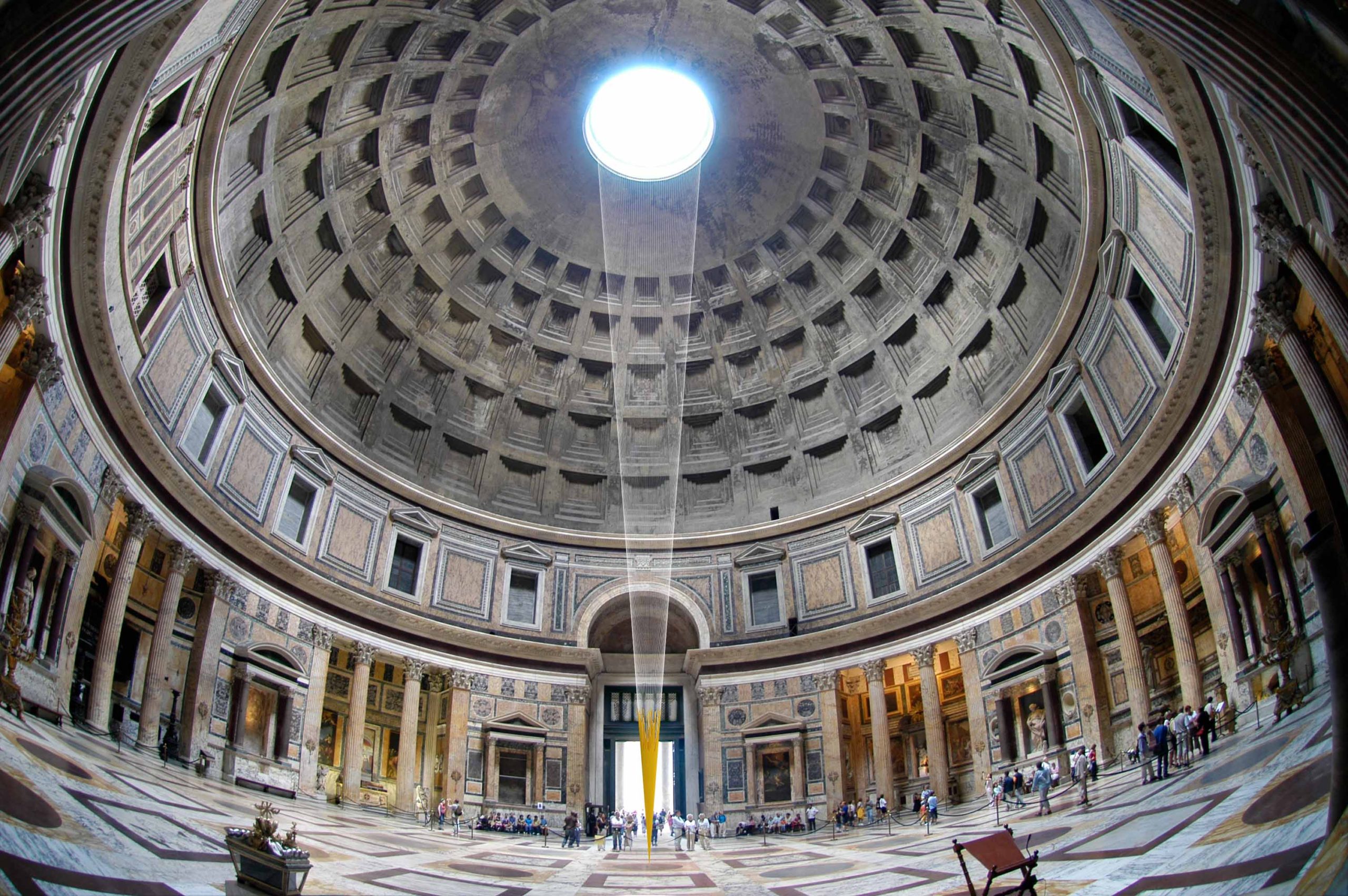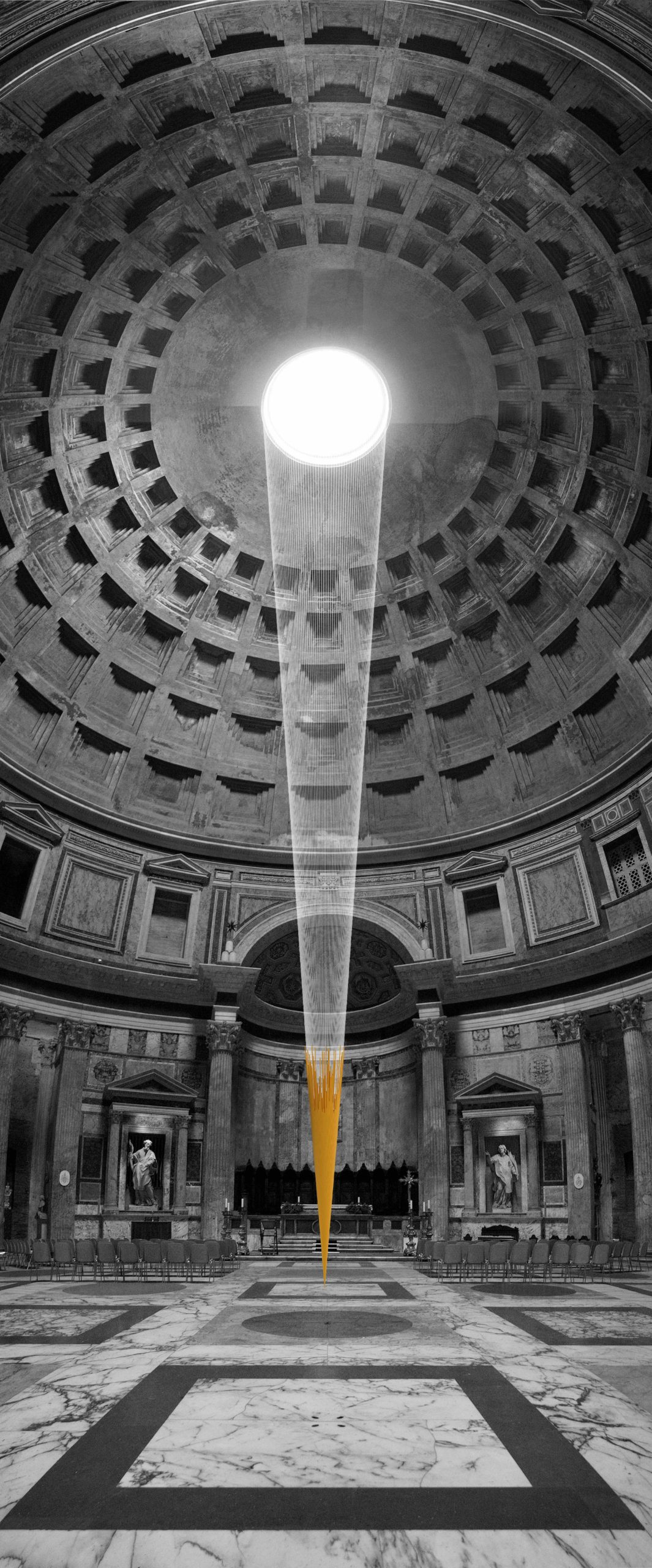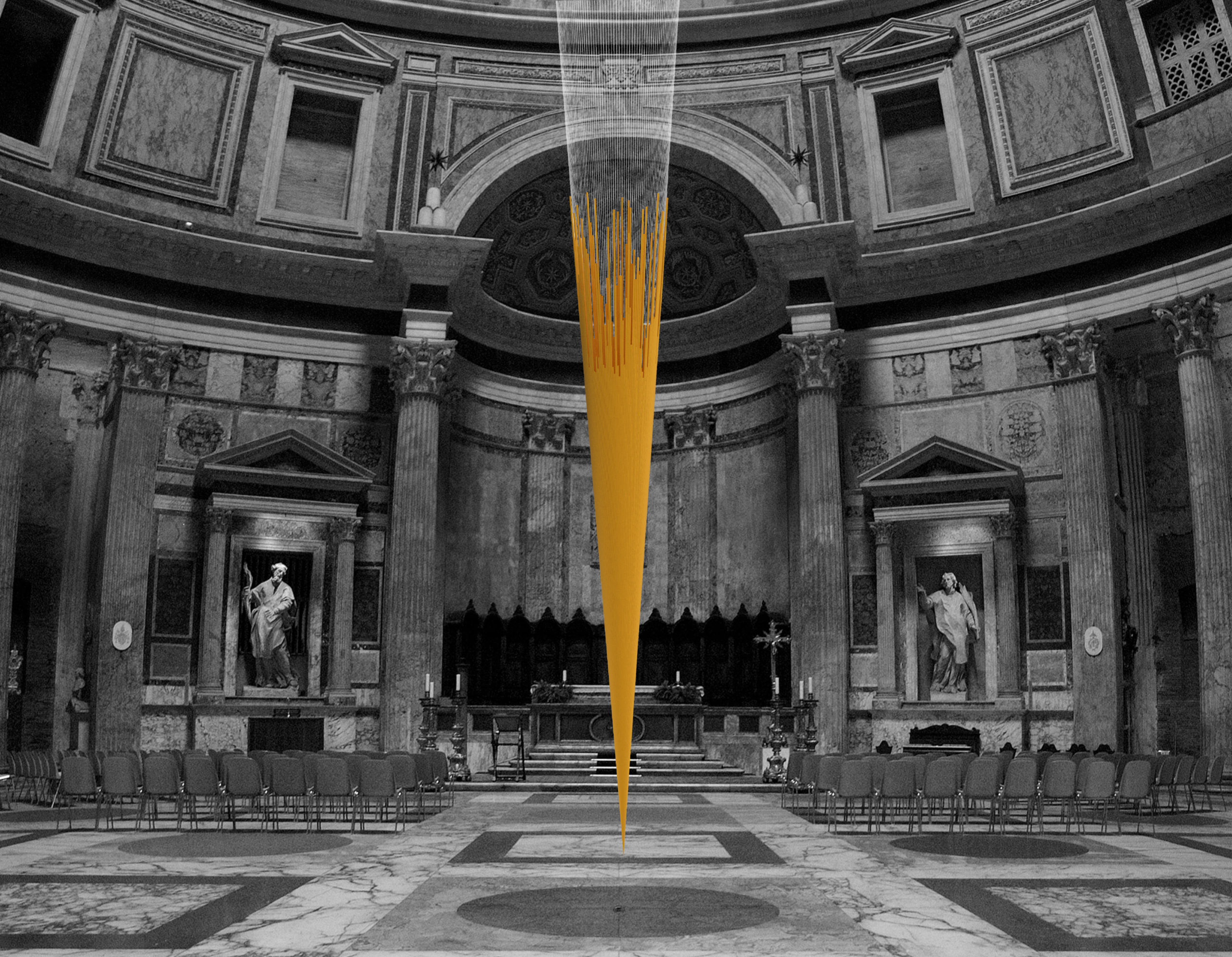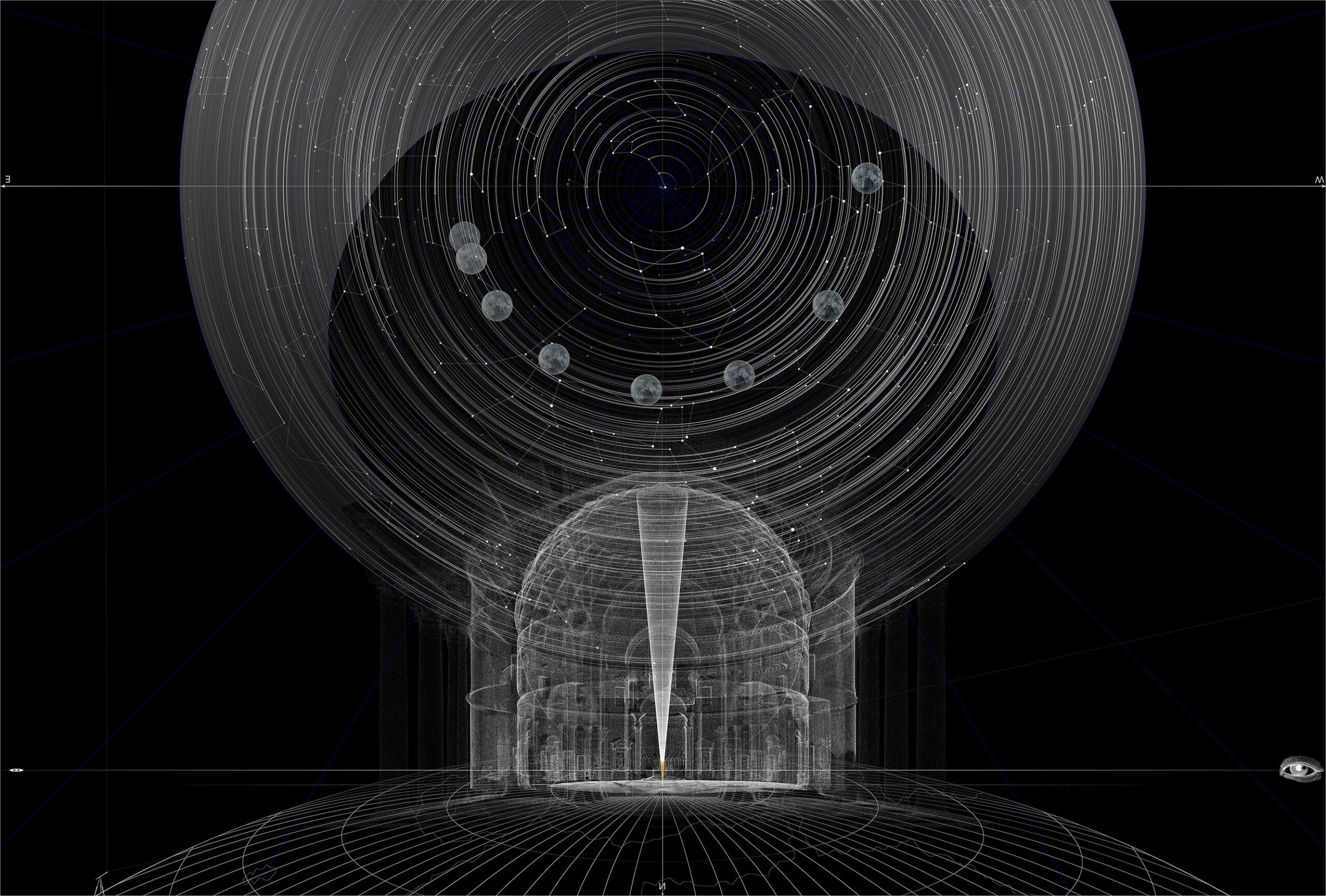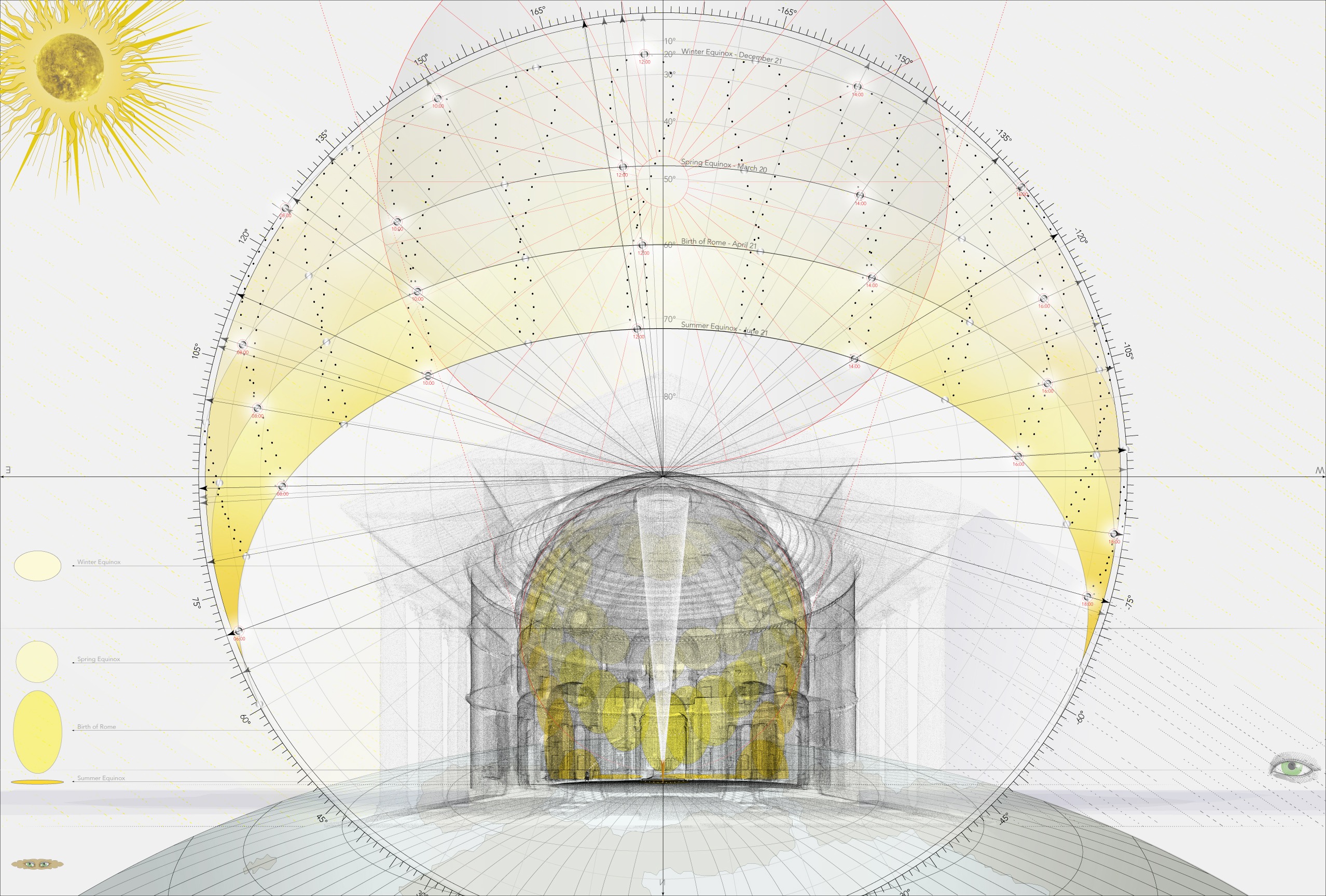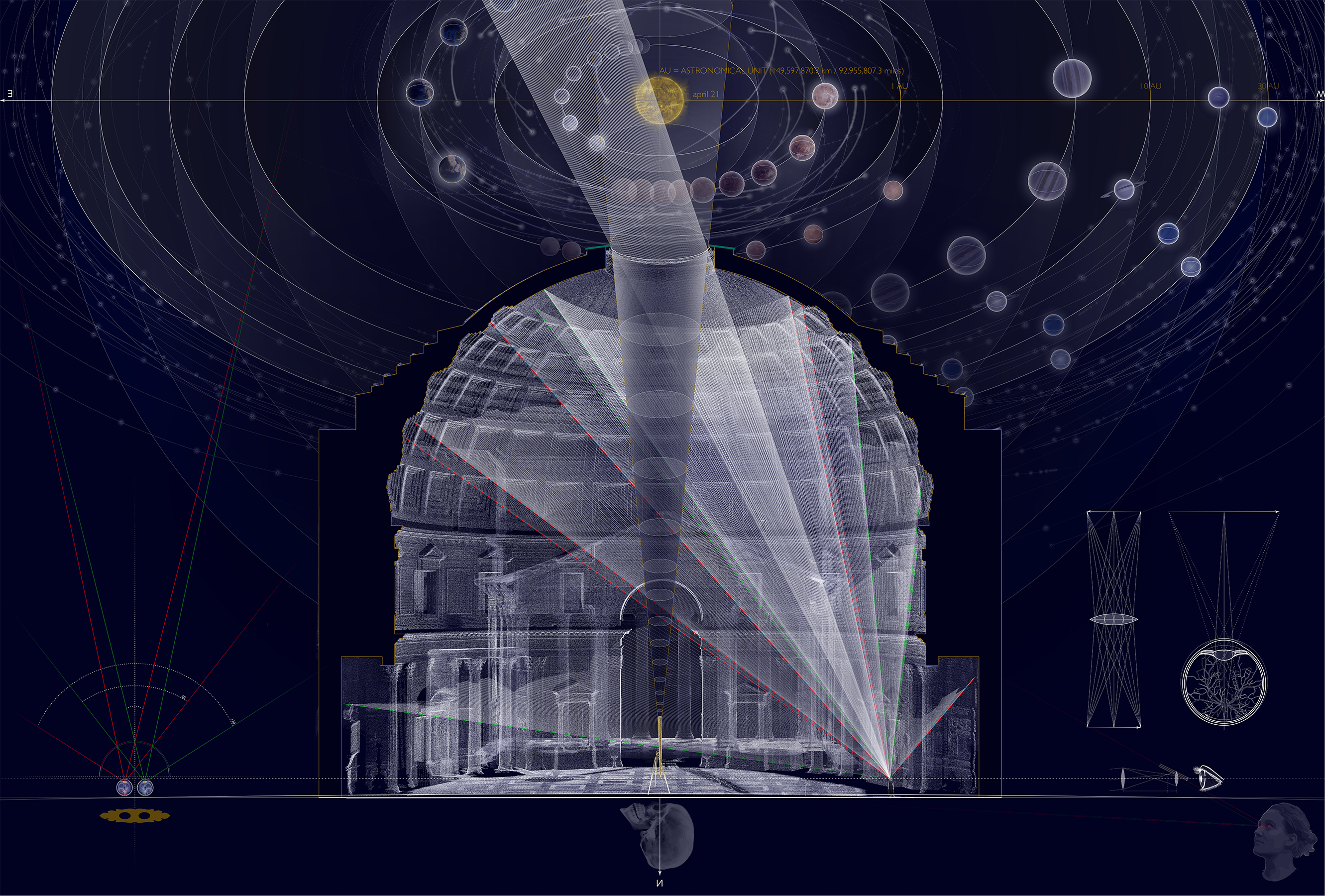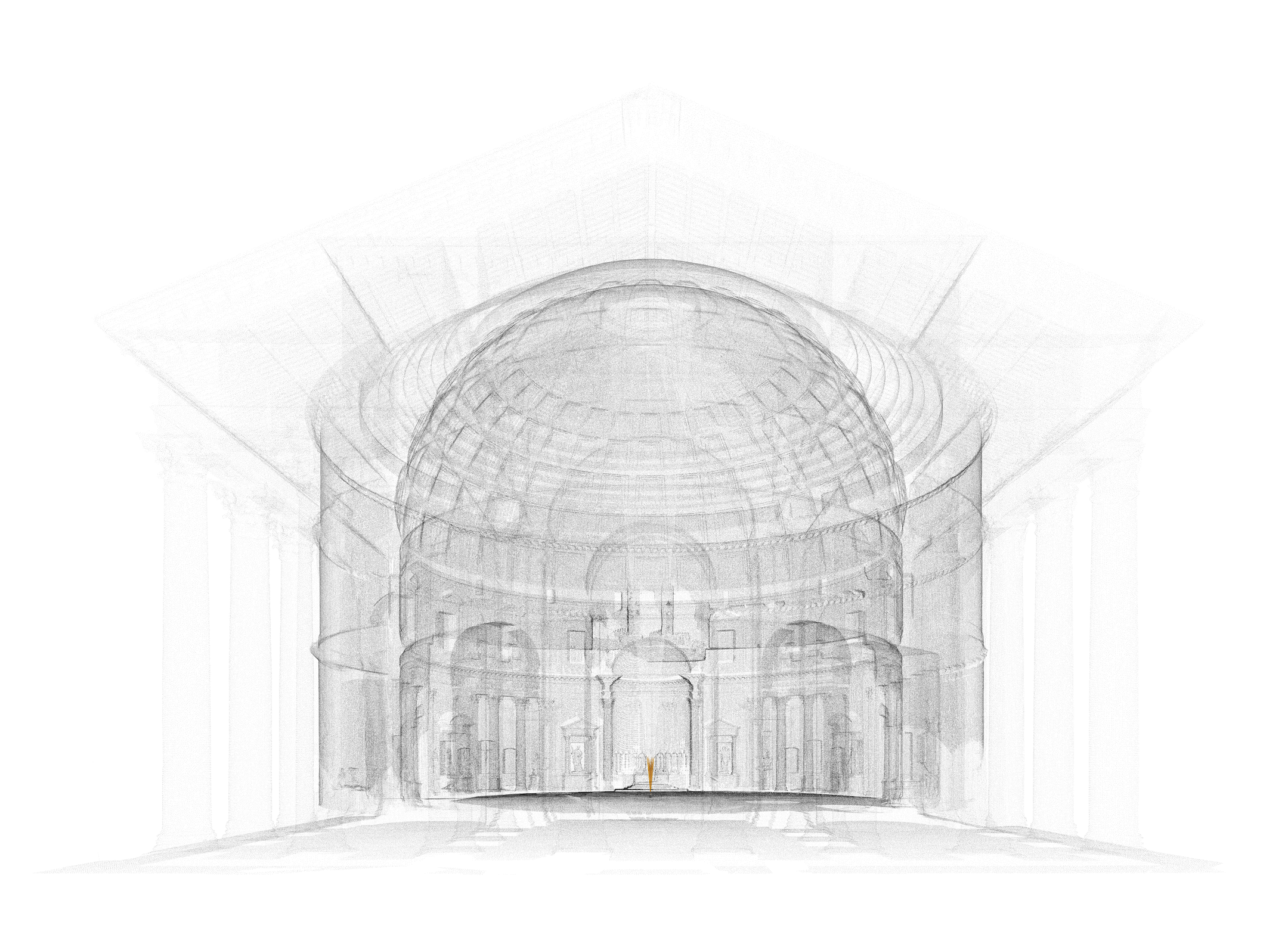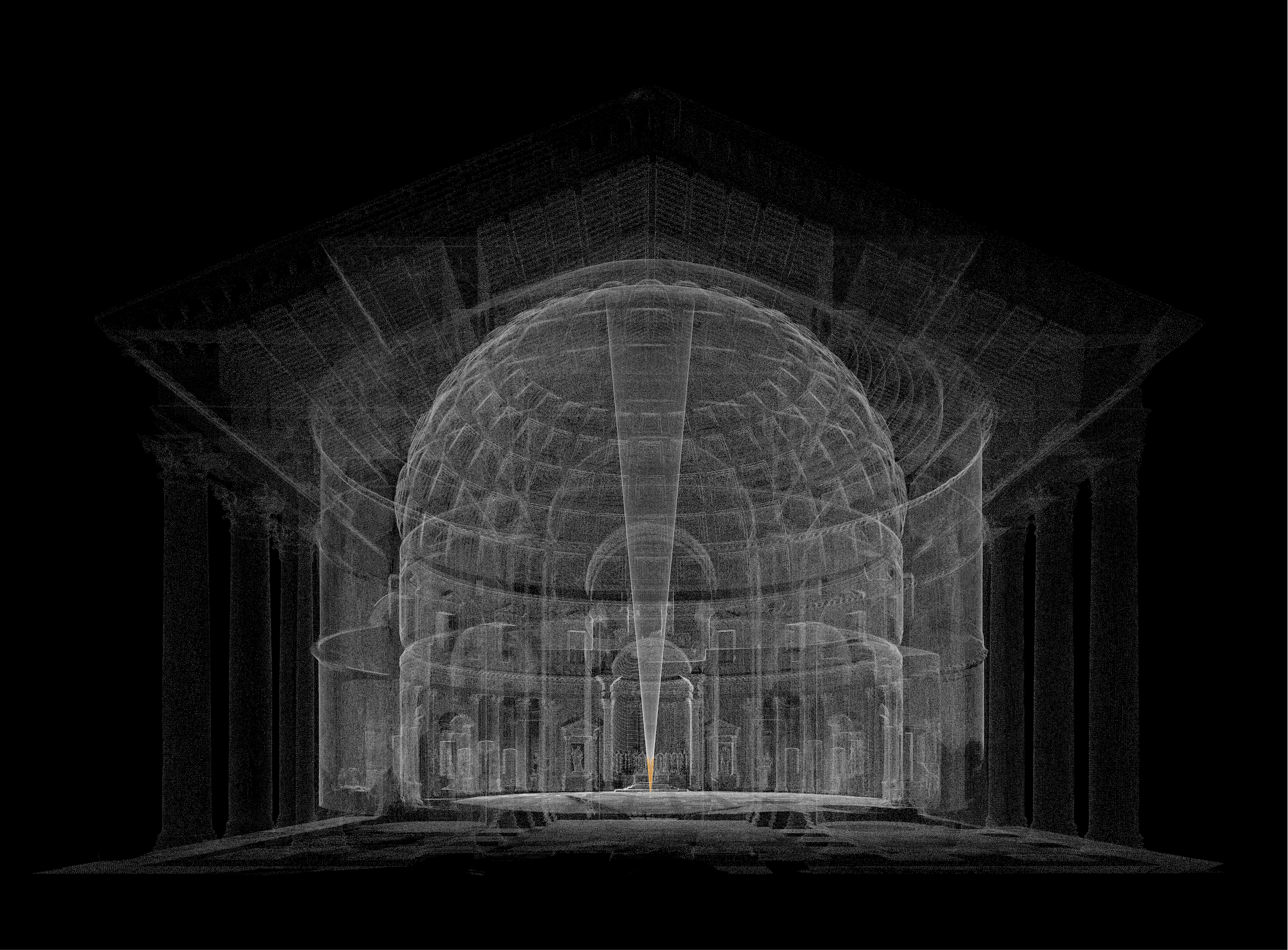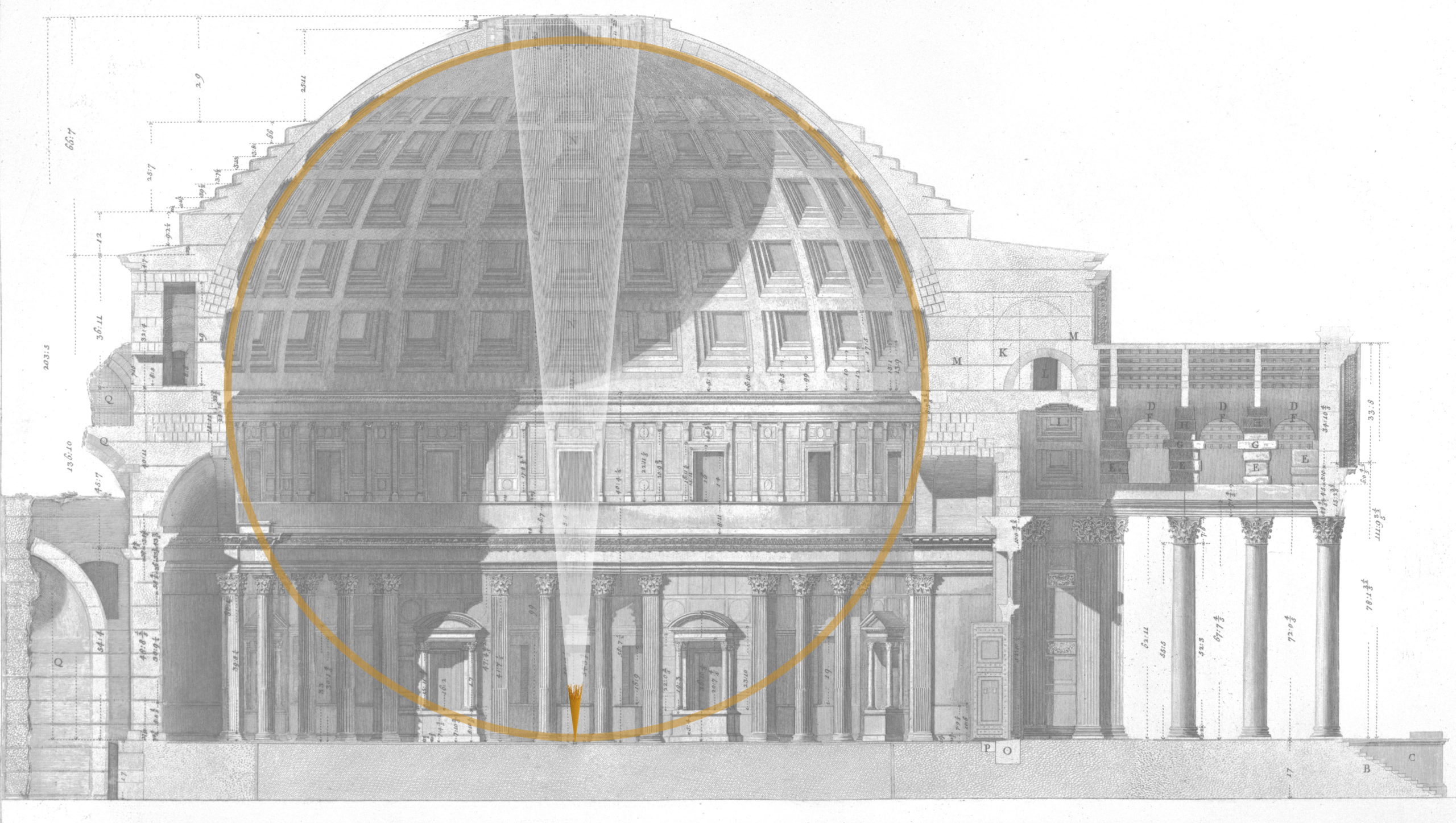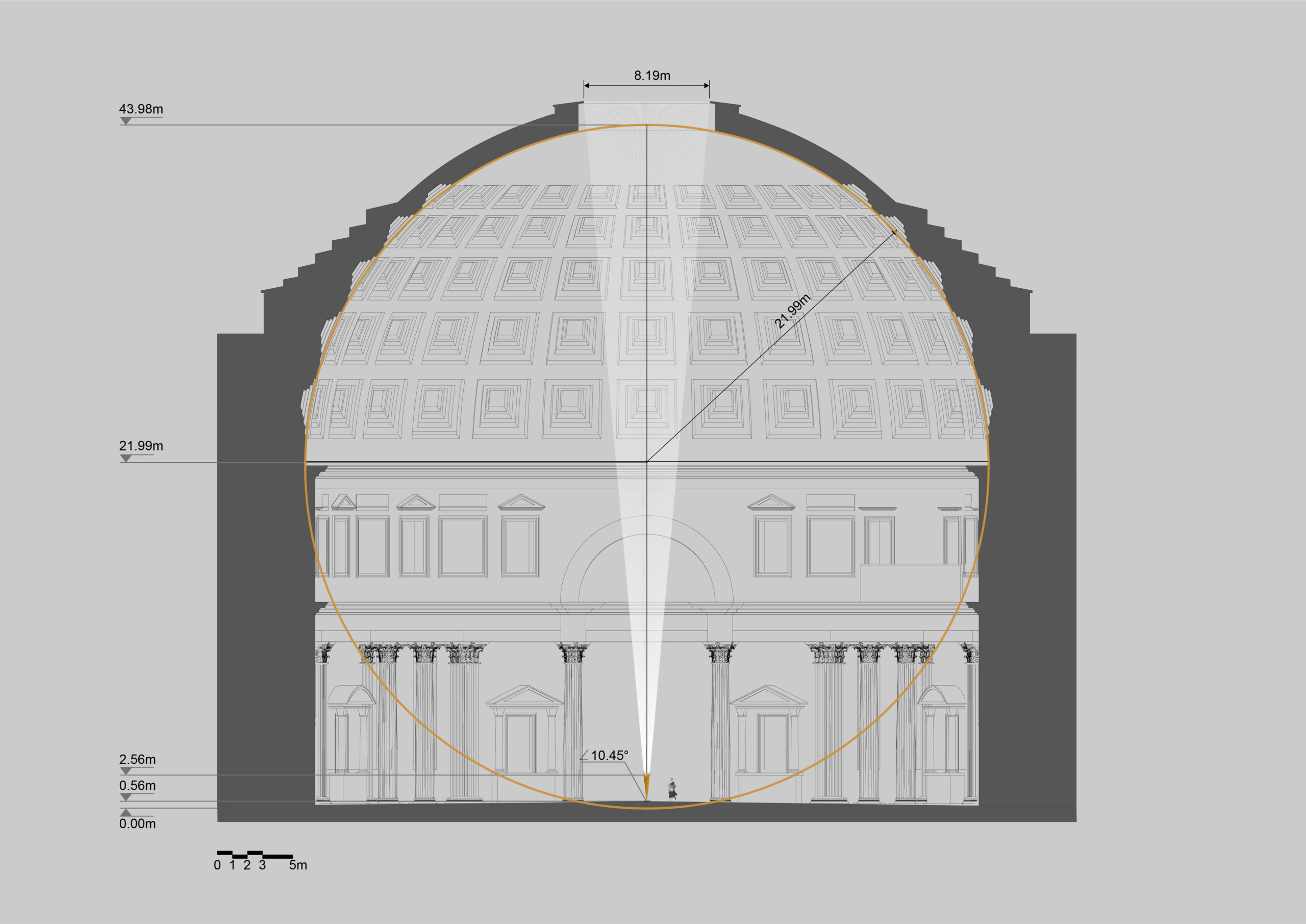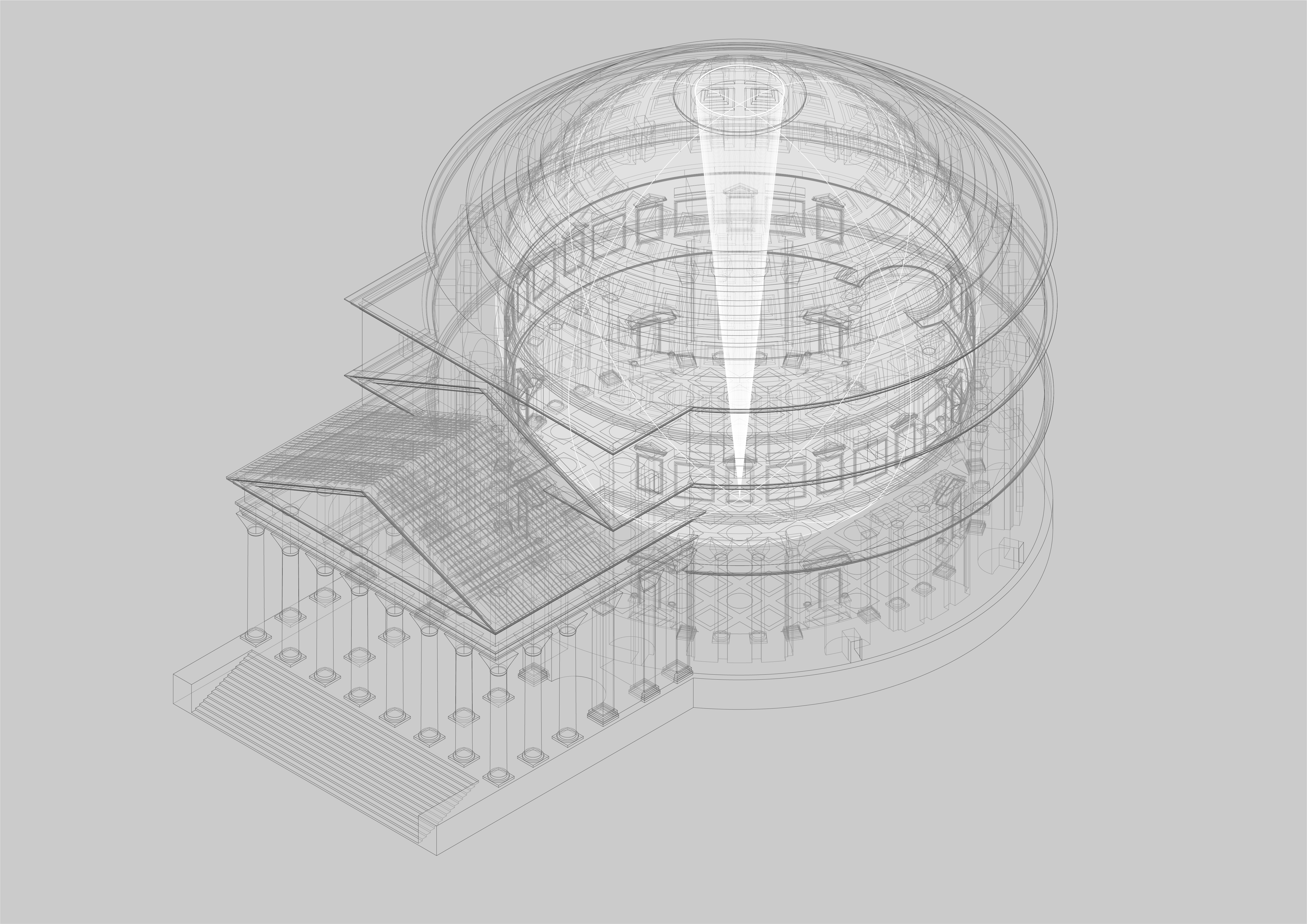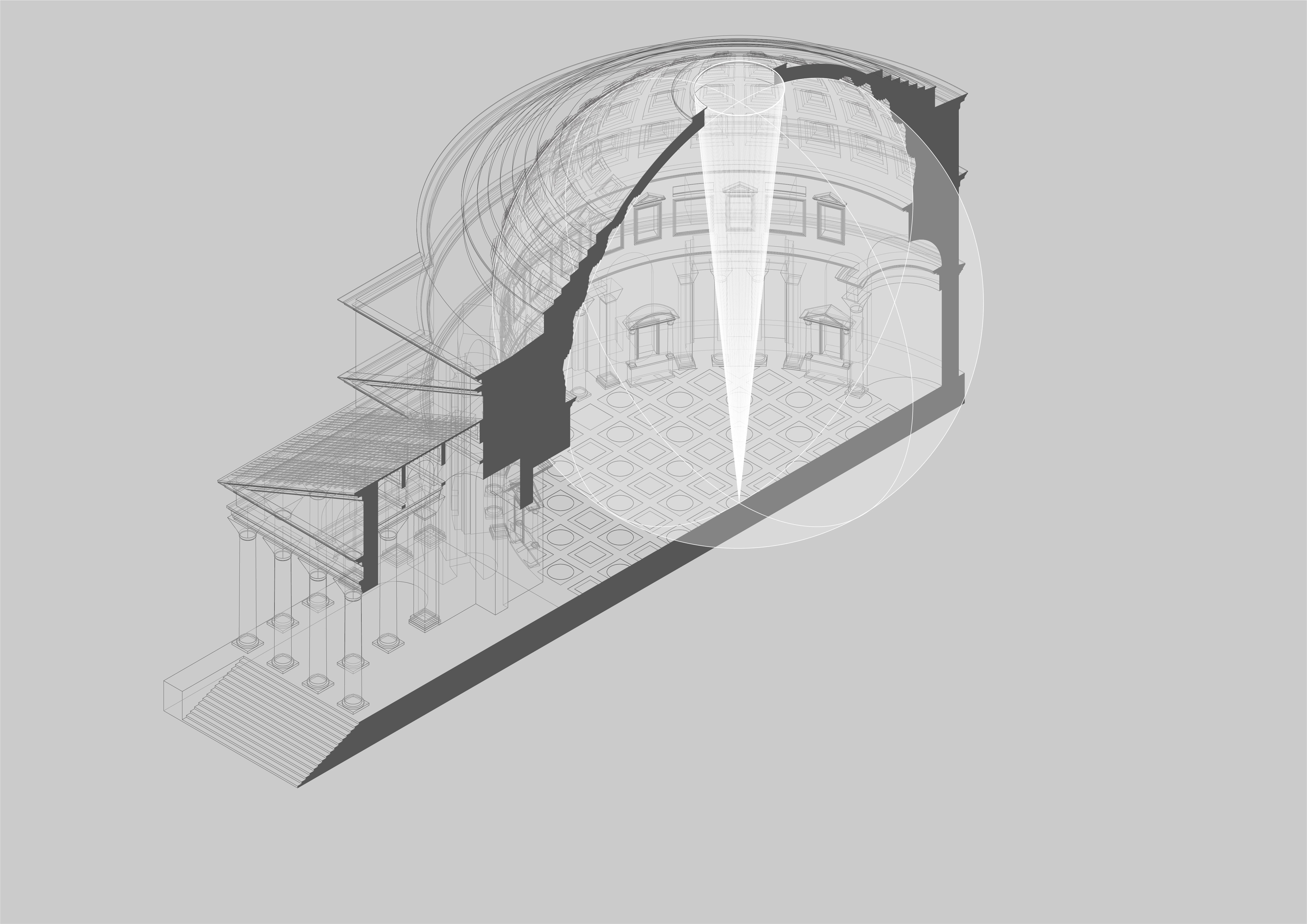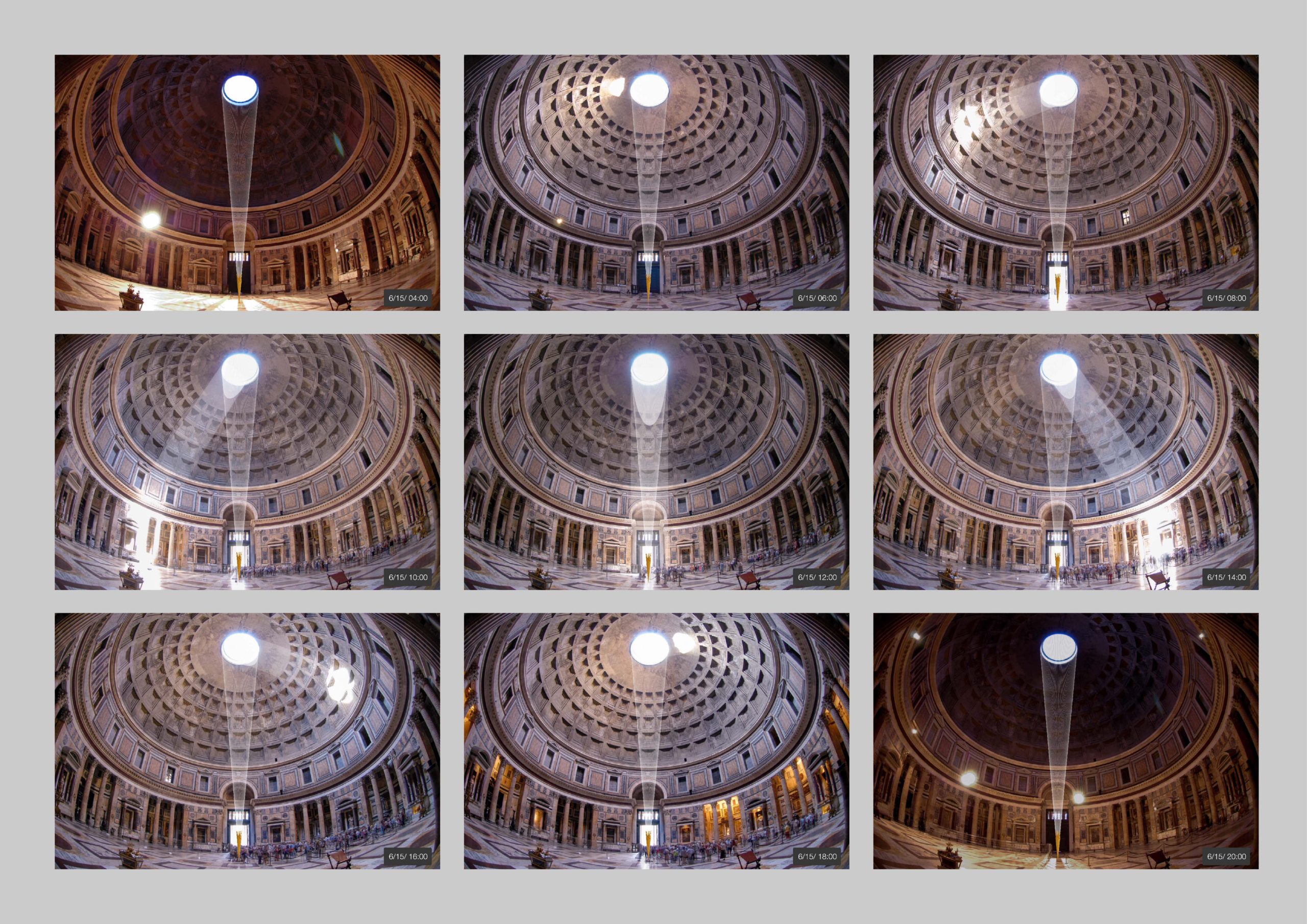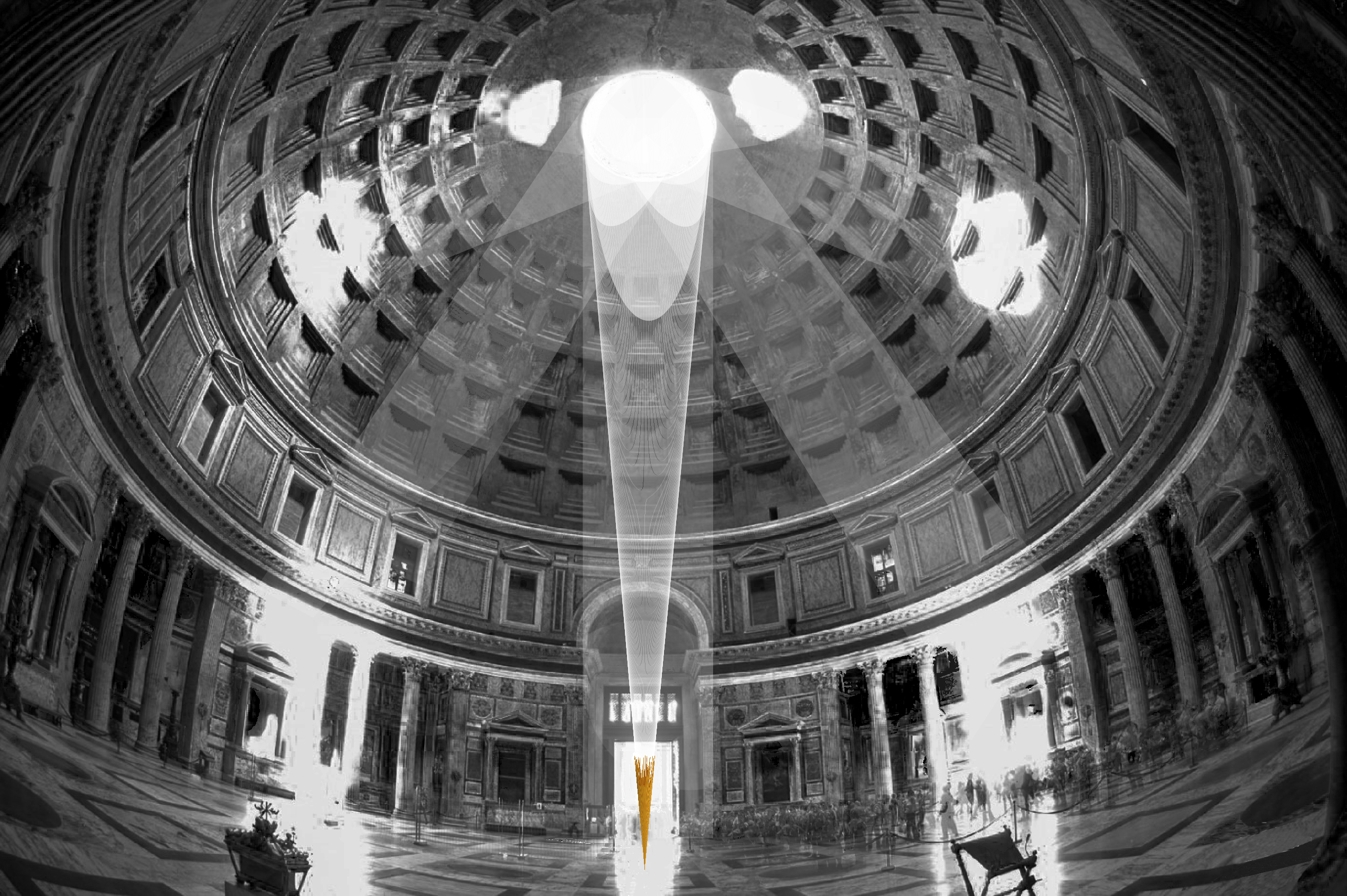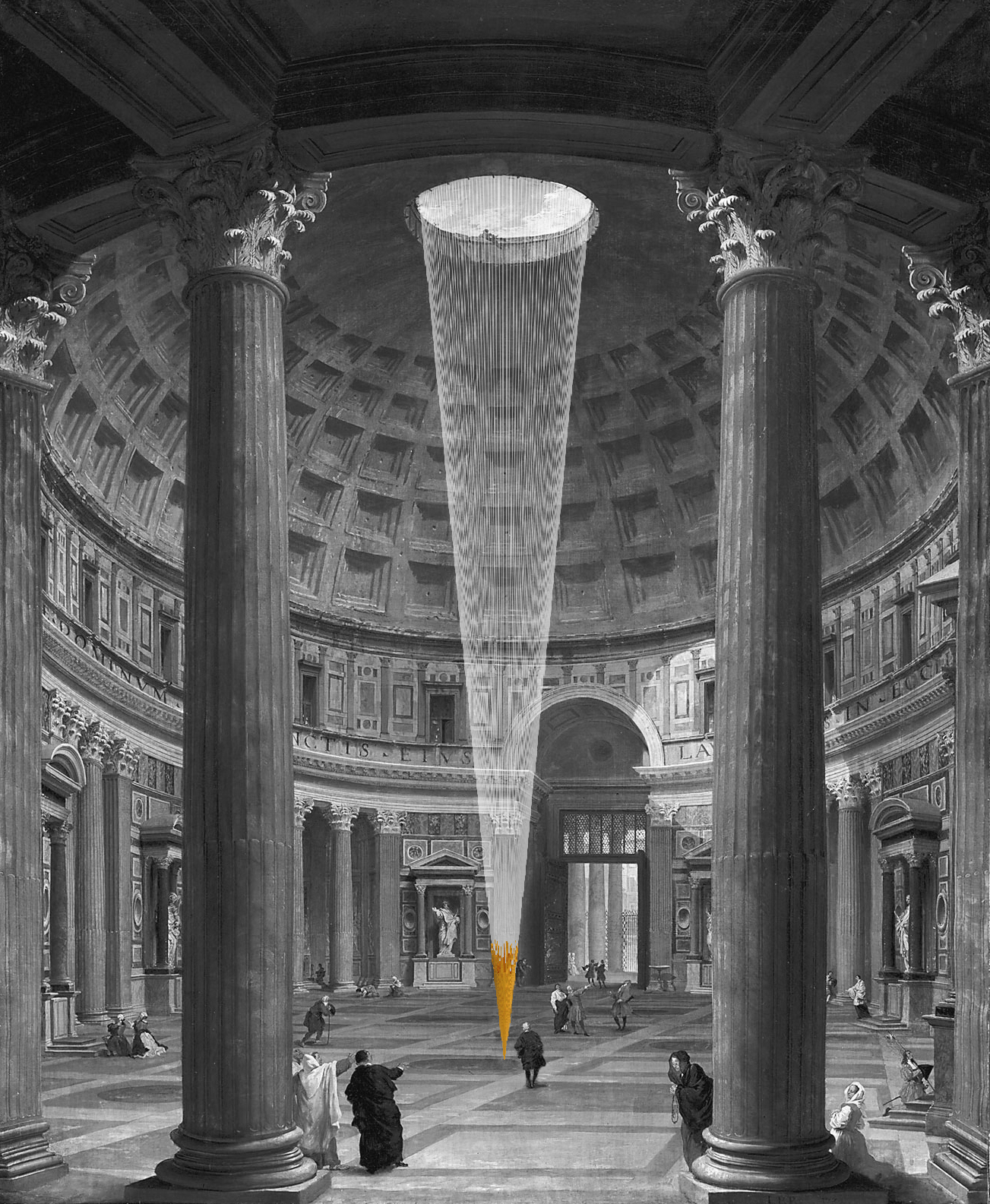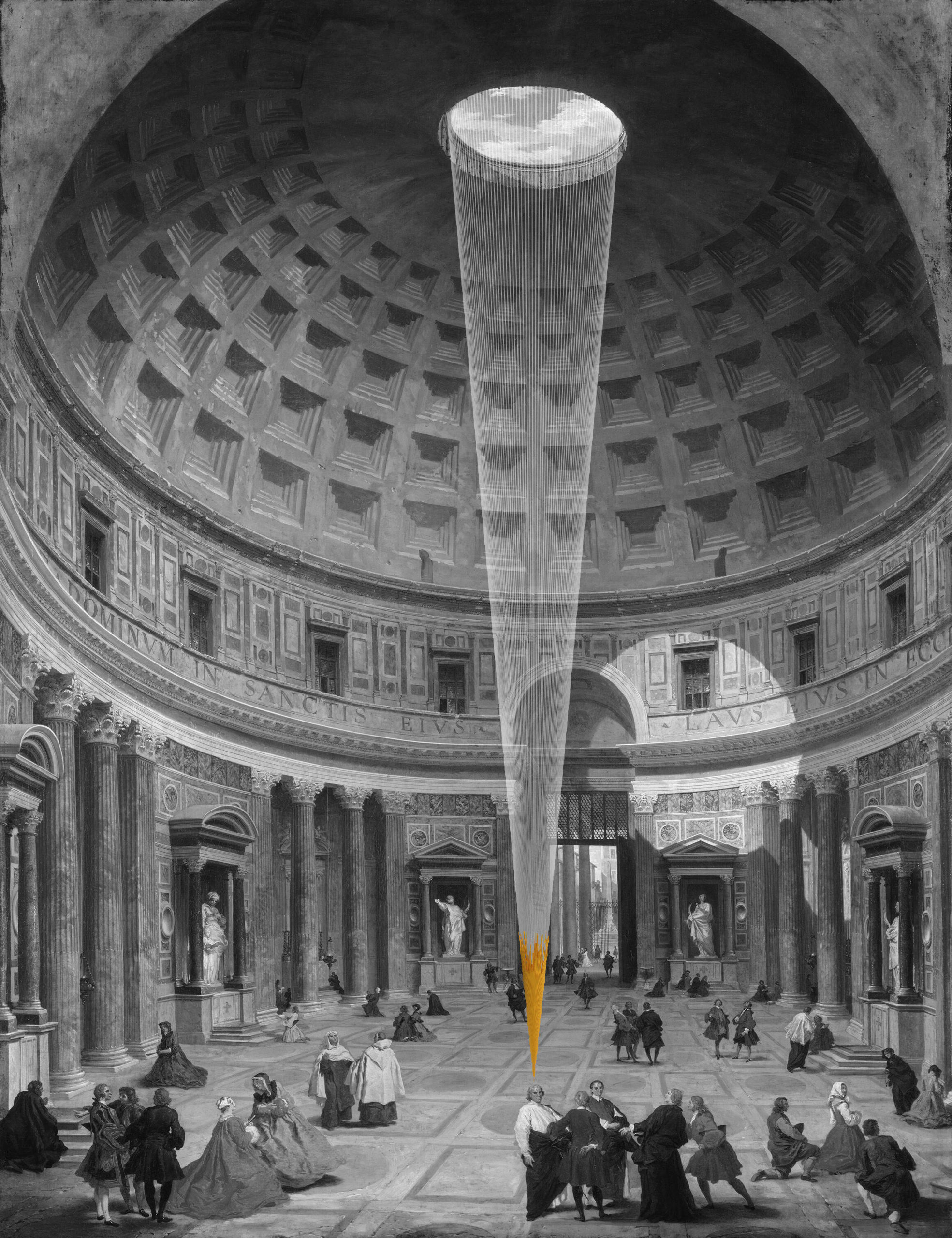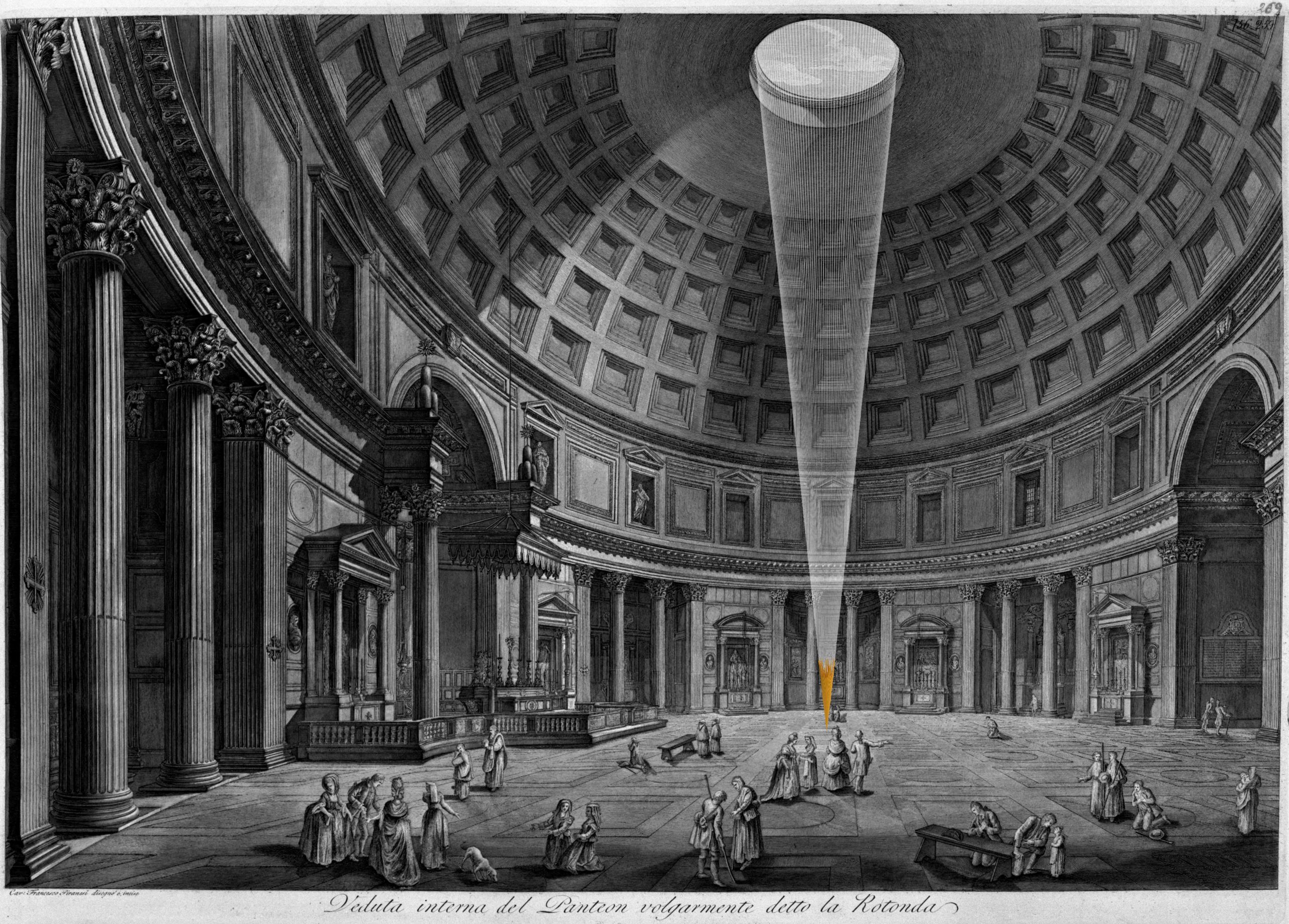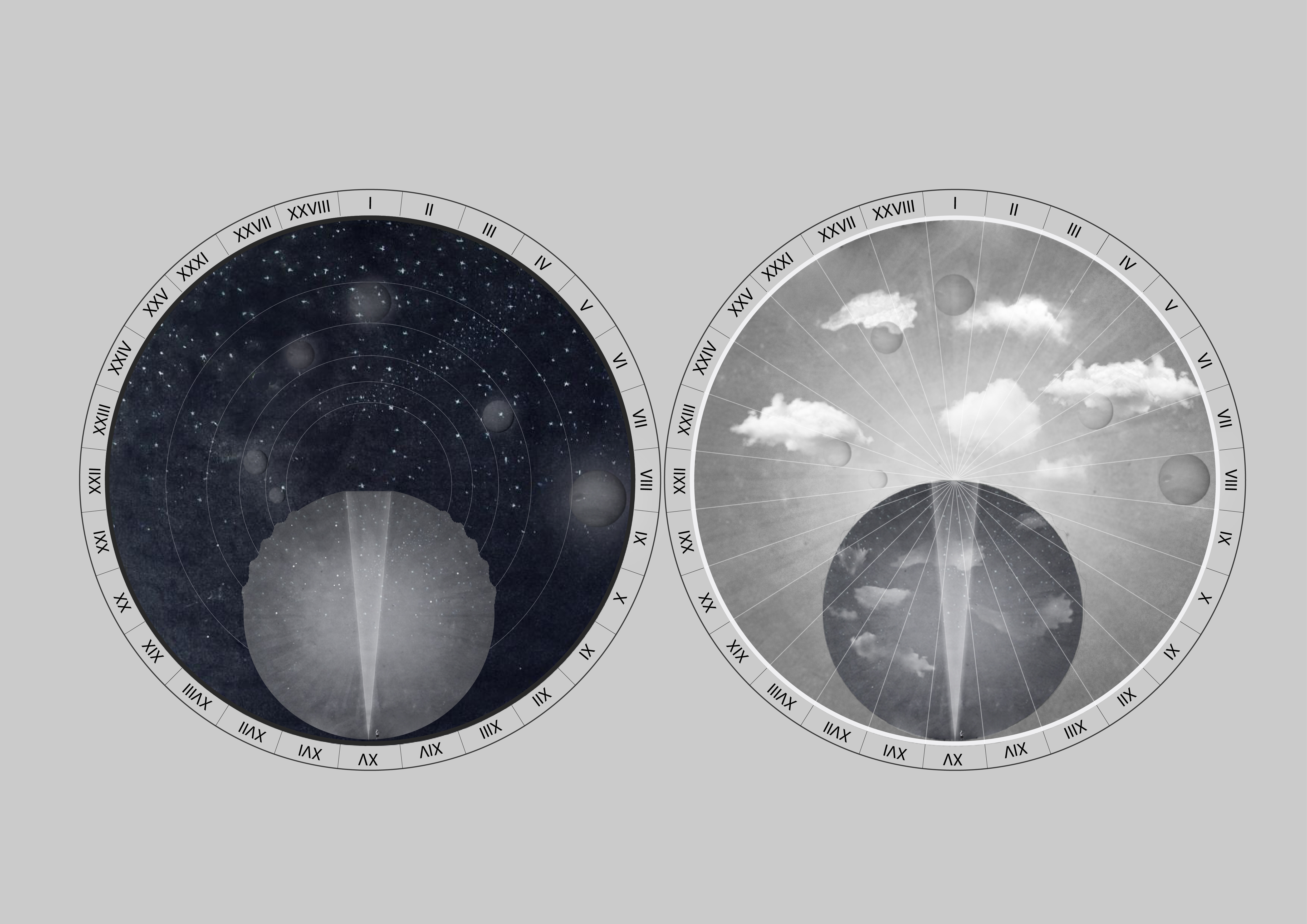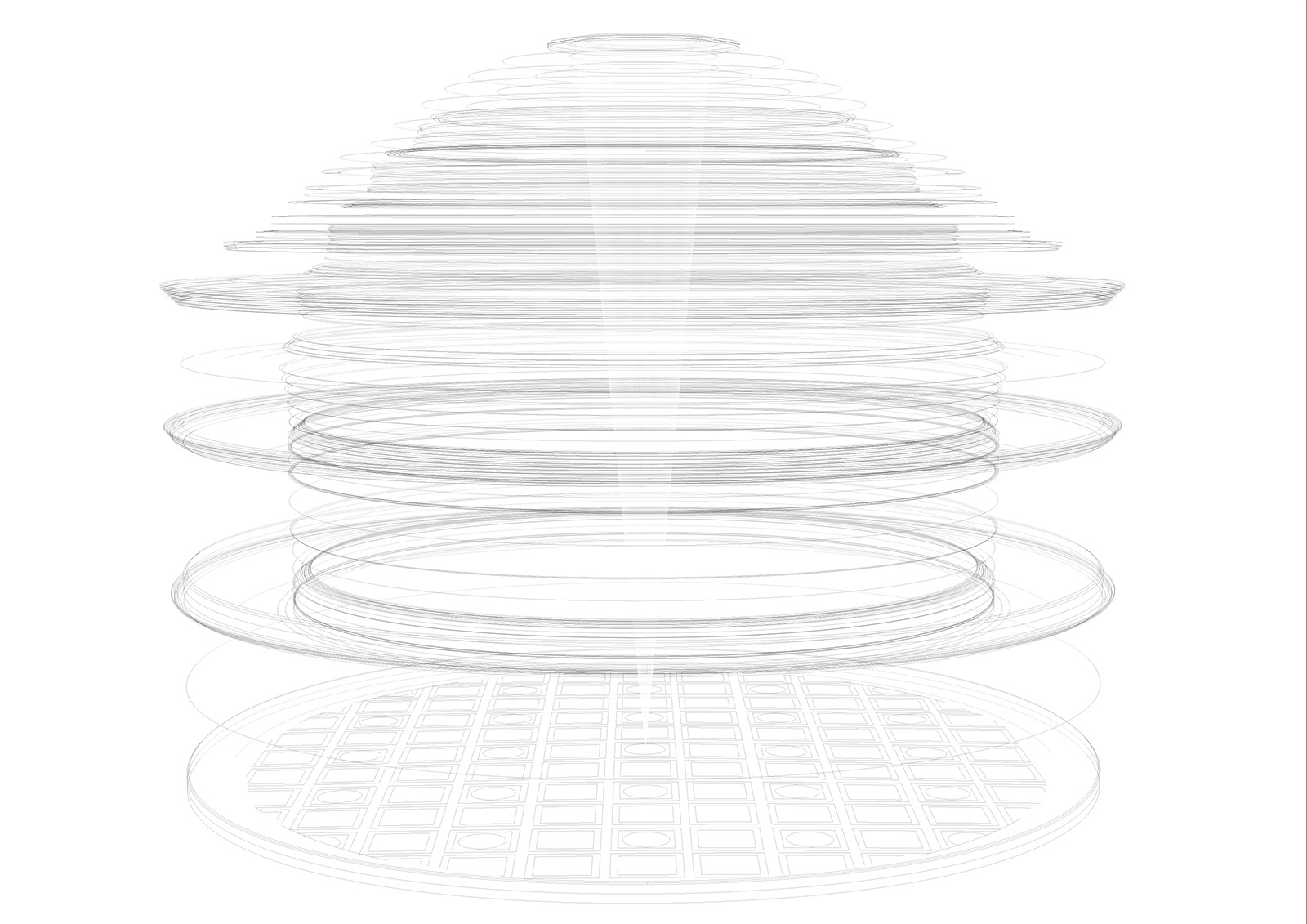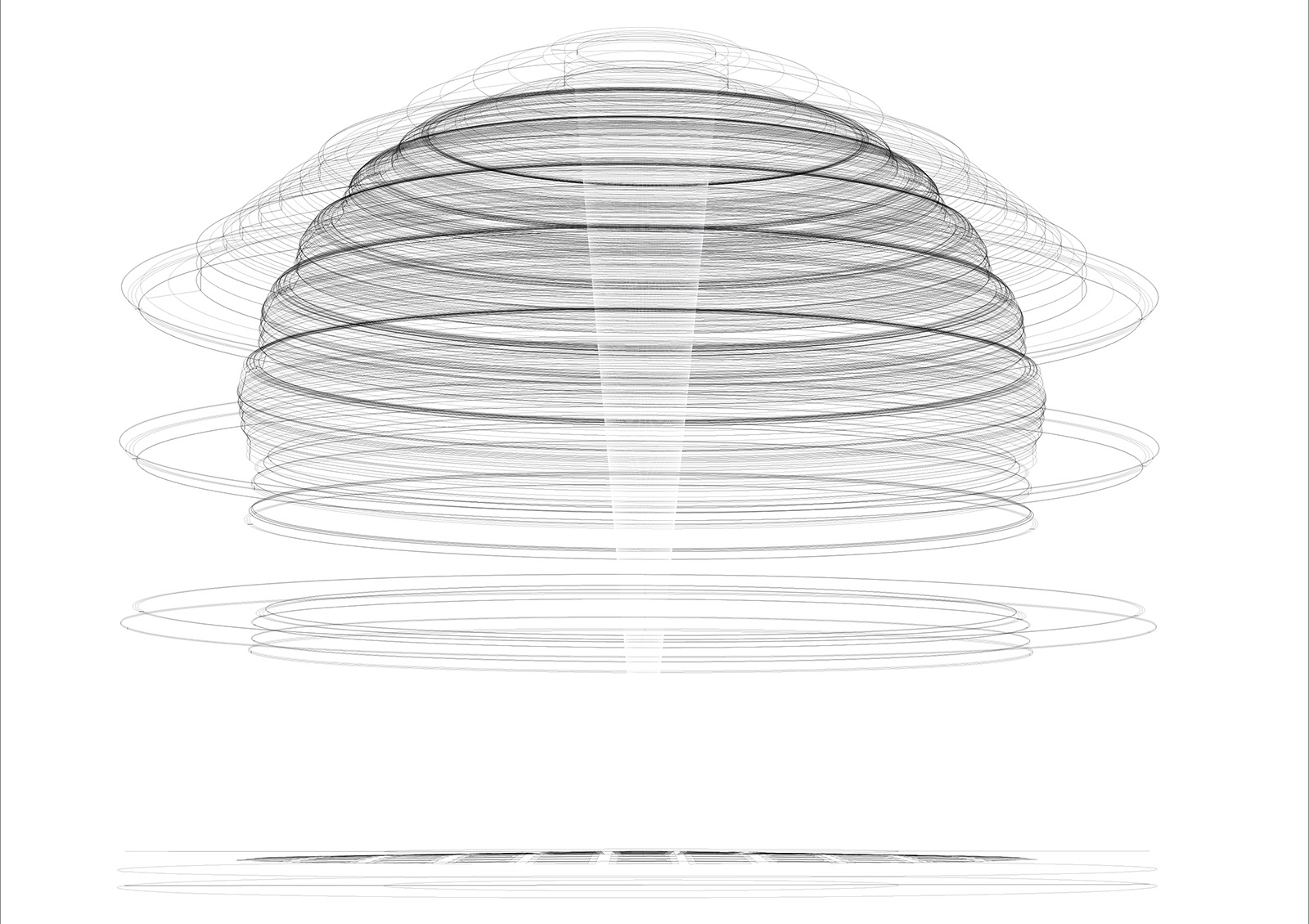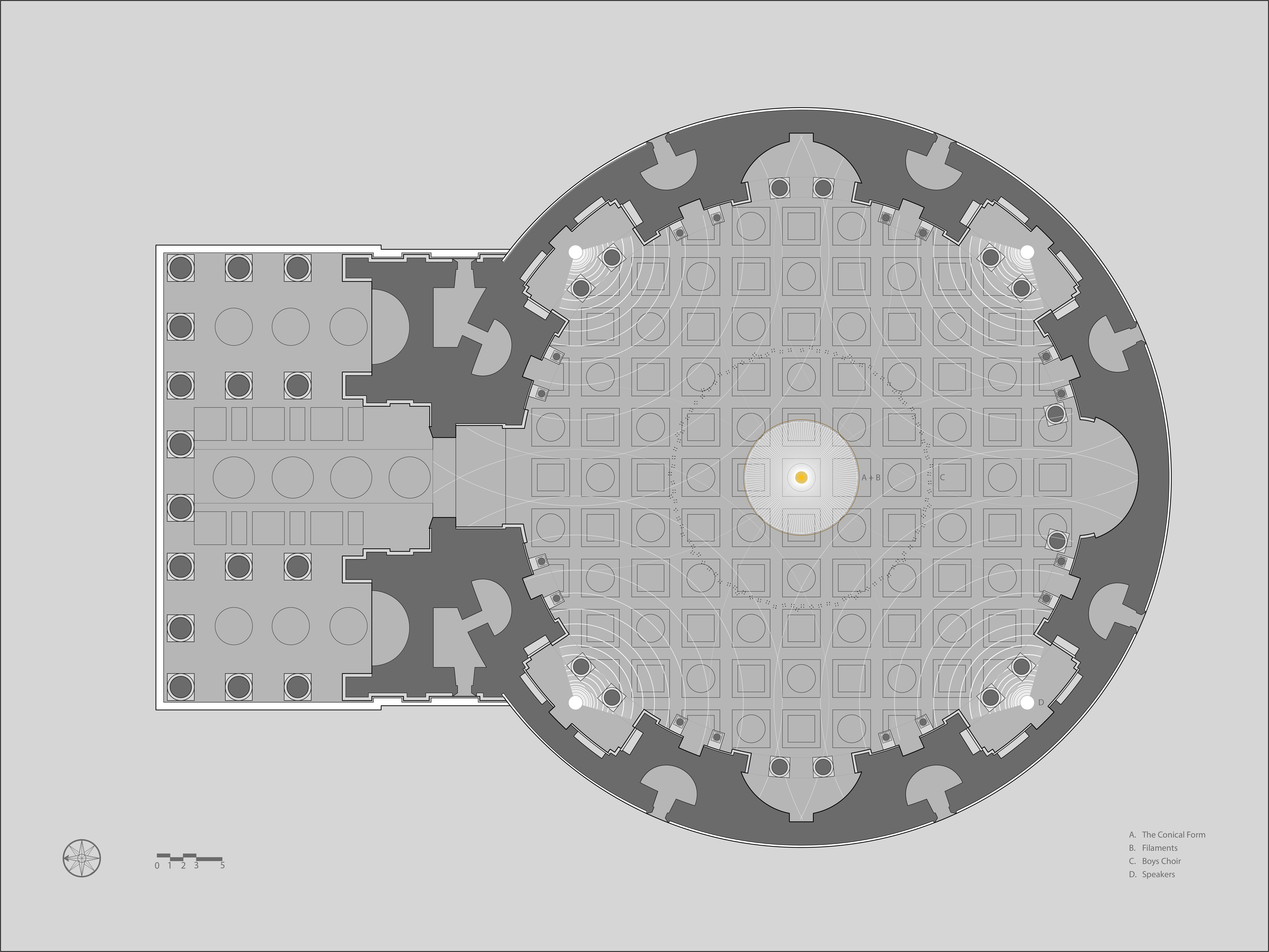Oculus
OCULUS
Location: Pantheon, Rome, Italy
Elements: Form, Projection, Sound
Materials: Thread, Bronze, Gold Leaf
Thread Cone Dimensions: 8.19m (26.9’) diameter x 45.8m (150.3’) height x 10.45° degrees
Gilded Cone Dimensions: 0.37m (1.2’) diameter x 2m (6.6’) height
Artistic Collaborators:
Concept and Artistic Direction; Form: Kristin Jones
Projection: Michael Benson
Sound: Walter Branchi
Team:
Research and Design Advisor: Daniel K. Brown
Engineering: Maurizio Teora, ARUP Milan Office
Digital Renderings and Geometric Analysis: Yuhao Jiang
Artistic Architectural Drawings: Nadja Martinovic
Project Management and Public Relations, Italy: Paola Pierotti + Andrea Nonni PPAN
Technical Director, Italy: Gianfranco Lucchino, Step Srl.
Technical Director, USA: Marty Chafkin, Perfection Electricks
Historical Research: Nathaniel Griffin Sloan
Curatorial Research: Kirila Cvetkovska
Photography: Marcello Melis
Consultant: Chiara Messineo
Design: Andrea Biagioni
Graphics: Jaqueline Pearse
Oculus Artist Residency Program in Rome:
Oculus awards one-year residencies to young New Zealand artists to collaborate on “Ephemeral Projects for the Eternal City”. Oculus provides full airfare, room and board to successful applicants, who reside for one year at the Oculus studios at Viale Di Trastevere 240 in Trastevere.
N.B. Applications for 2025 have now closed.
A tribute to the Pantheon
Ephemeral Projects for the Eternal City: Collaborations by Kristin Jones
The iconic architecture of the Pantheon is a phenomenon of the built world, inspiring awe since its construction around 126 AD. Upon entering, one is struck by the grandeur of the space. One’s gaze is instinctively drawn upward towards the oculus. It is like being inside of an eye – the building like a telescope focused above to the sky. The experience is transcendent: one’s finiteness stands in juxtaposition to the infinity of the beyond. The building is not only a national monument, an active church, a former Roman temple, and the gravesite of the Italian monarchs and the artist Raphael, but is also a model of the Heavens, an astronomical timepiece and a lens to view the sky.
Oculus is a proposal for an installation that pays tribute to the architecture of the Pantheon. This delicate work is a meditation on time and space, light and sound, the ephemeral and the eternal. The work renders manifest what is implicit in the architecture itself: the conical form, the resonating frequencies of sound and the cyclical passage of light due to the rotation of the Earth. The ephemeral installation stands in sharp contrast to the building’s monumentality and enduring history.
The proposed installation will be composed of three elements: Form, Projection and Sound.
Form
A thread cone envisioned by artist Kristin Jones will trace the field of view of an individual observer, descending from the astonishing oculus to an intricate gilded cone at a point just above the floor, marking the geometric center of the Pantheon. The threads will be illuminated by the sunlight as the day passes.
Projection
A Deep Field image composited from observations by one of the world’s leading observatories, the Canada France Hawaii telescope near the summit of the dormant volcano Mauna Kea in Hawaii, will be projected seamlessly onto the dome at night, and will move in synchrony with the east-west transverse of the night sky visible in the drift of stars in the oculus itself – turning the Pantheon dome into a majestic magnifier of a universe far beyond what the unassisted human eye can see. Processed and composed by artist Michael Benson, this moving projection contains 300,000 galaxies, some as distant as 9 billion light-years from Earth.
Sound
A quiet atmospheric soundscape corresponding directly to the resonating frequencies of the dome, by Roman composer Walter Branchi, will allow visitors to listen to the sacred geometry of the building. A choir will inaugurate the installation for the opening.
Artist Bios:
Kristin Jones maintains both studio and public practices, working collaboratively across disciplines to create site-specific, time-based projects that frame natural phenomena against the built environment. Jones has spent her career creating large-scale collaborative works for the public domain. She has devoted more than two decades to the founding of the Rome-based non-profit Tevereterno. By partnering with a treasury of artists, colleagues and the City of Rome to raise awareness of the Tiber River, Jones directed and facilitated programs for its protection and revitalization. Her installations, works on paper and time-lapse photography have been exhibited internationally. She is the winner of three Fulbright Fellowships and is a Fellow of the American Academy in Rome. Oculus is among a series of projects for Rome under the auspices of “Ephemeral Projects for the Eternal City.”
Michael Benson is an artist, writer, and award-winning filmmaker who works at the intersection of art and science. In the last decade he has staged a series of large-scale shows of reprocessed planetary landscape photography in major museums internationally. He takes raw data from planetary science archives and processes it, creating large-format photographic prints. Benson edits, composites, mosaics, and then finally optimizes these images, producing seamless vistas currently beyond direct human experience. His book Cosmigraphics: Picturing Space Through Time (2014), a finalist for a Los Angeles Times Book Award, chronicled 3,000 years of humanity’s attempts to visualize the universe in graphic form. He’s currently using scanning electron microscopes to focus on natural design at sub-millimeter scales for a project titled Nanocosmos.
Walter Branchi is a gardener, composer and writer with a deep interest in an ecological view of the world. He began his career as a jazz musician and received a Fulbright fellowship to Princeton University in electronic music, where he began his lifelong work on the composition of “Intero.” Branchi was a visiting composer at Stanford University at the CCRMA (Computer Centre Research Music and Acoustics) and composer in residence at Simon Fraser University in Vancouver (British Columbia). For many years, he taught electronic music composition at both the Conservatory of Santa Cecilia in Rome and at the Conservatory G. Rossini in Pesaro where he founded the electronic music department. Branchi is the author of the first textbook in Italy on the technology of electronic music: “Tecnologia della musica elettronica.” He was a member of the “Gruppo di Improvvisazione Nuova Consonanza” from 1966 until 1975 and in 1987 he co- founded Musica/Complessita? and in 1997 “Harmonices Mundi ” in Orvieto, Italy. Branchi is also a world-renowned expert in Tea China and Noisette Roses. He lives in Umbria, Italy where for more than 15 years, he owned and managed a rose nursery.

